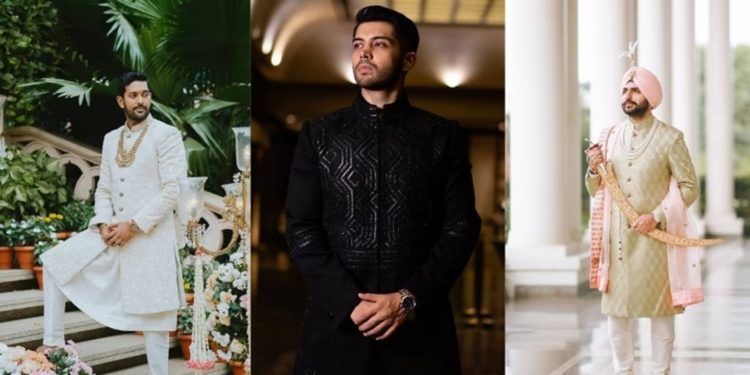Introduction
India, a land steeped in history and diverse traditions, boasts a kaleidoscope of traditional dresses that encapsulate the essence of its rich cultural tapestry. Traditional Indian attire isn’t just clothing; it’s a reflection of India’s centuries-old heritage, craftsmanship, and regional diversity. In this article, we will take you on a captivating journey through the mesmerizing world of traditional Indian dresses, uncovering the stories they tell and the cultural significance they hold.
Sari: The Elegance of Six Yards
The sari, a symbol of timeless grace and femininity, is the quintessential traditional Indian dress. This six to nine-yard length of fabric is draped in various styles, creating a stunning ensemble. The sari comes in a plethora of fabrics, designs, and colors, each representing different states and cultures within India. Whether it’s the resplendent Kanjivaram silk sari from Tamil Nadu or the delicate Chikankari work sari from Uttar Pradesh, each piece is a testament to India’s vibrant traditions.
Salwar Kameez: Comfort Meets Tradition
The salwar kameez, a versatile and comfortable attire, consists of a long tunic (kameez), loose-fitting pants (salwar), and a matching scarf (dupatta). Loved for its adaptability, it can be as simple as daily wear or as opulent as bridal attire. The salwar kameez is a canvas for various embroidery techniques, showcasing the artistry of regions like Punjab, Gujarat, and Rajasthan.
Lehenga Choli: Bridal Grandeur
For weddings and festive occasions, the lehenga choli reigns supreme. This three-piece ensemble comprises a flared skirt (lehenga), a fitted blouse (choli), and a draped scarf (dupatta). Adorned with intricate embroidery, sequins, and often crafted from luxurious fabrics, the lehenga choli exudes opulence. Each region in India contributes its own unique style and embroidery patterns to this iconic bridal wear.
Anarkali Suit: Reviving Mughal Splendor
Inspired by the legendary Mughal dancer Anarkali, the Anarkali suit is a revival of the Mughal era’s royal fashion. This dress features a long, flowy frock-style top paired with fitted leggings and a matching dupatta. The Anarkali suit embodies grace and elegance, making it a favorite for formal events and celebrations, capturing the essence of timeless Indian fashion.
Sherwani: Royal Attire for Men
Indian men’s traditional attire is equally regal. The sherwani, a long coat-style garment, is typically paired with churidar pants and a scarf. This outfit exudes regal charm and is often the choice for grooms during weddings. The sherwani celebrates India’s historical splendor and adds a touch of sophistication to special occasions.
The Cultural Significance
Traditional Indian dresses are more than just garments; they are living repositories of India’s cultural heritage. These dresses are markers of identity, revealing the wearer’s roots and affiliations with specific regions and communities. In addition to their cultural importance, traditional Indian dresses are celebrated for their intricate craftsmanship, vivid color palettes, and enduring designs.
Conclusion
Traditional Indian attire encapsulates the heart and soul of India’s rich cultural landscape. It is a testament to the country’s diverse traditions, time-honored craftsmanship, and the indomitable spirit of its people. These dresses aren’t merely clothing; they are living, breathing artifacts of India’s storied past and vibrant present. So, whether you’re an admirer of fashion, culture, or simply someone looking to immerse themselves in the beauty of tradition, exploring the world of Indian dresses is a voyage worth undertaking.You can check some of their latest collection here: https://ethnicworld.co.uk/collections/sherwani
David Prior
David Prior is the editor of Today News, responsible for the overall editorial strategy. He is an NCTJ-qualified journalist with over 20 years’ experience, and is also editor of the award-winning hyperlocal news title Altrincham Today. His LinkedIn profile is here.









































































